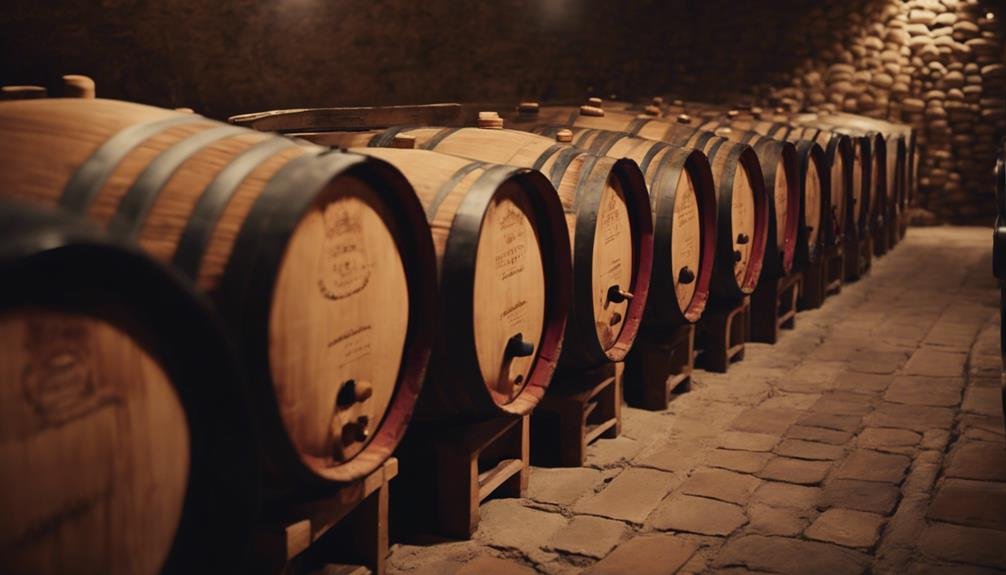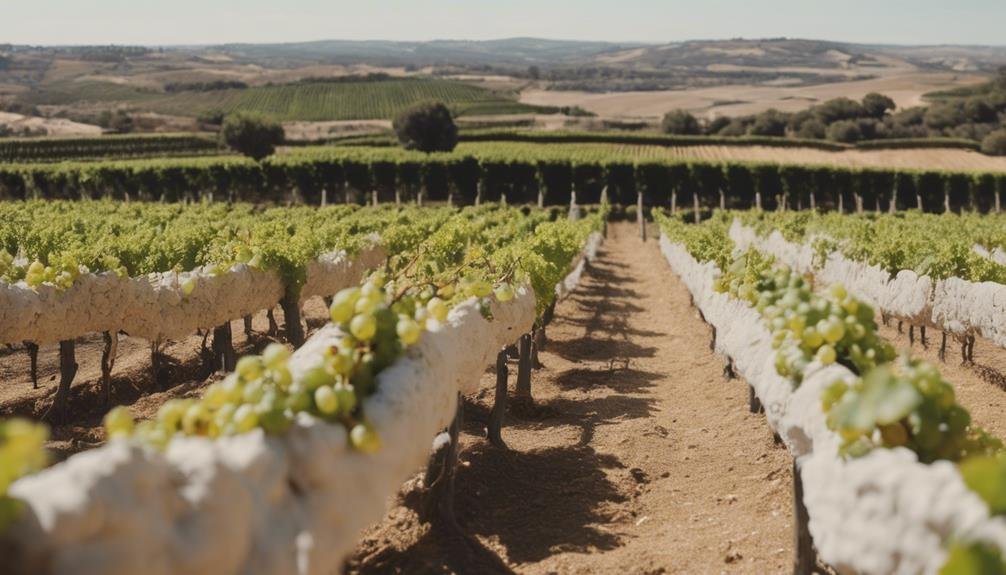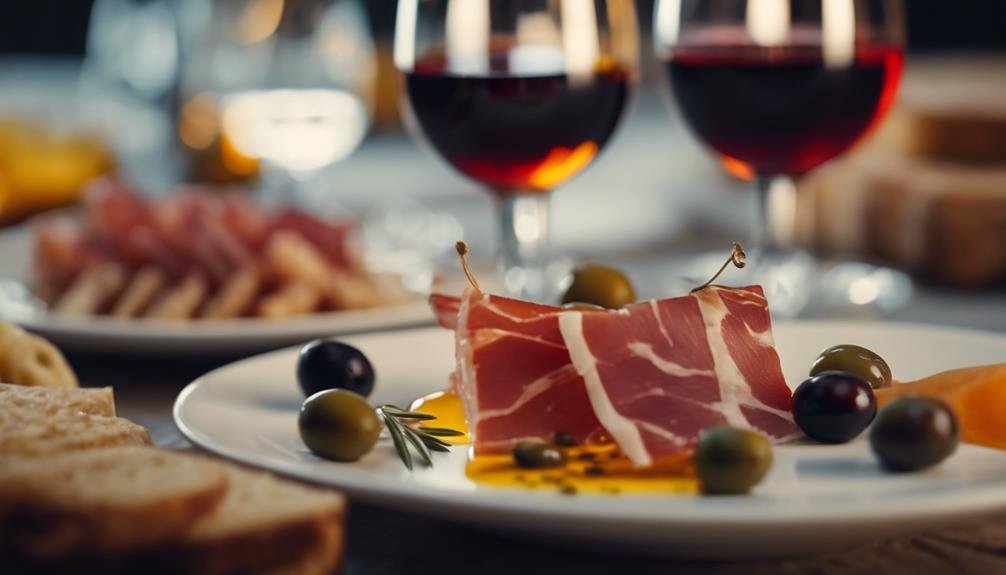Spanish Sherry offers a versatile wine experience with diverse flavors like nutty acidity in Dry Sherry and crisp notes in Manzanilla. The fortification process with brandy infusion enhances flavor, controls sweetness, and adds complexity. Aging in solera systems and yeast influence create rich, tangy profiles. Different styles like Manzanilla and Oloroso cater to varied preferences, pairing well with cheddar cheese and seafood. Historical significance adds cultural depth, favored by historical figures and passed down through generations. Exploring Spanish Sherry reveals a world of unique character and culinary possibilities.
Sherry Varieties and Flavor Profiles
In exploring Sherry varieties and their distinct flavor profiles, one encounters a diverse range of styles that cater to varying preferences and palates.
Dry Sherry, known for its nutty acidity, offers a unique taste experience that pairs exceptionally well with foods like cheddar cheese and seafood.
The Manzanilla variety, a type of dry Sherry, showcases a crisp and invigorating character that complements a wide array of dishes.
Understanding the nuances of Sherry's flavor profiles can enhance the dining experience, allowing for delightful food pairings that bring out the best in both the wine and the cuisine.
Whether enjoying a light and tangy Manzanilla or a richer Oloroso Sherry, exploring the world of Sherry varieties opens up a domain of culinary possibilities.
Fortification Process and Its Effects
The fortification process in Sherry production involves the addition of brandy to enhance flavor, alcohol content, and longevity of the wine. Brandy infusion not only increases the alcohol level but also contributes to the complexity and richness of Sherry.
By fortifying the wine, producers can control the sweetness levels and create a balanced taste profile that appeals to a wide range of palates. Additionally, the brandy infusion helps in preserving the wine, allowing it to age gracefully and develop unique characteristics over time.
This process of fortification is vital in giving Sherry its distinct flavor enhancement, making it a versatile and enduring choice for wine enthusiasts seeking a refined drinking experience.
Sherry Production Techniques

Utilizing a meticulous blending process, Sherry production techniques intricately combine grapes from various vintages to craft its diverse array of flavors and styles. When it comes to Sherry production, several key factors contribute to its unique character:
- Aging methods: Sherry undergoes distinctive aging processes such as the solera system, where barrels are stacked, allowing for fractional blending over time.
- Yeast influence: The presence of flor yeast on dry Sherries contributes to their specific flavor profiles, adding nutty and tangy notes.
- Oxidation techniques: Controlled oxidation during aging is essential for developing the rich and complex flavors found in Sherries like Oloroso.
- Blending practices: Blending different Sherry styles and vintages is a traditional technique that ensures consistency and quality in the final product, offering a wide range of taste experiences.
Exploring Diverse Sherry Styles
Sherry's diverse array of flavors and styles invites the curious palate to explore the multifaceted world of Spanish wine experiences. From the crisp and saline notes of Manzanilla to the richer, nuttier profiles of Oloroso, each style offers a unique tasting journey.
Dry Sherries, aged under flor, boast tangy and nutty tasting notes that pair excellently with foods like cheddar cheese and seafood. On the other hand, sweeter and more oxidized Sherries like Oloroso provide a rich and complex experience.
Regional differences in aging processes contribute to the distinct characteristics found in Sherries, making it a versatile option for various palates. Exploring the diverse Sherry styles allows for a deeper appreciation of the intricate flavors and complexities of this renowned Spanish wine.
Historical Significance of Spanish Sherry

With a history deeply intertwined with maritime exploration and trade, Spanish Sherry has garnered a reputation for its significance beyond its taste and flavors.
- Maritime Influence: Sherry's fortification process was initially developed to preserve the wine on long sea voyages, making it a favorite among sailors and traders.
- Famous Aficionados: Historical figures like America's founding fathers favored Sherry and Madeira, contributing to its popularity and cultural significance.
- Age-Old Traditions: Sherry production techniques have been passed down through generations, maintaining the authenticity and quality of this unique wine.
- Cultural Impact: The diverse styles and flavors of Sherry have made it a versatile and beloved choice in various cultures, offering a wide spectrum of tasting experiences.
Frequently Asked Questions
Why Is Sherry Aged Under a Layer of Yeast Called Flor?
Sherry is aged under a layer of yeast called flor to protect the wine from oxidation, impart unique flavors, and maintain freshness. The flor formation prevents excessive contact with air, contributing to Sherry's distinct characteristics.
What Makes Oloroso Sherry Sweeter and More Oxidized?
Oloroso Sherry achieves its distinct sweetness and increased oxidation levels through deliberate winemaking techniques. The oxidation process enhances the wine's flavors, while the sweetness results from extended aging without the protective layer of flor yeast.
How Does the Oxidation Process in Sherry Contribute to Its Flavors?
The oxidation process in Sherry enhances its flavor profiles by introducing nutty, acidic, and tangy notes. This unique winemaking practice under flor or through intentional oxidation results in a diverse range of flavors, from rich and dark to dry and light.
What Distinguishes Sherry From Other Types of Fortified Wines?
Sherry distinguishes itself from other fortified wines through its unique characteristics. The presence of flor during the aging process imparts distinct flavors and tanginess. This process, exclusive to Sherry production, contributes to its unparalleled taste profile.
Why Were Madeira and Sherry Favored by Historical Figures Like Americas Founding Fathers?
Madeira and Sherry were favored by historical figures like America's founding fathers due to their historical significance and colonial preferences. These wines' longevity and distinct flavors made them ideal choices for long sea voyages and sophisticated palates.
Conclusion
To sum up, the world of Spanish Sherry offers a rich tapestry of flavors, production techniques, and historical significance.
From the sweet to the dry varieties, each glass of Sherry tells a story of tradition and craftsmanship.
As you explore the diverse styles of Sherry, you'll uncover a world of complexity and depth that will captivate your palate.
So, raise a glass and toast to the versatile and enduring experience that is Spanish Sherry.
